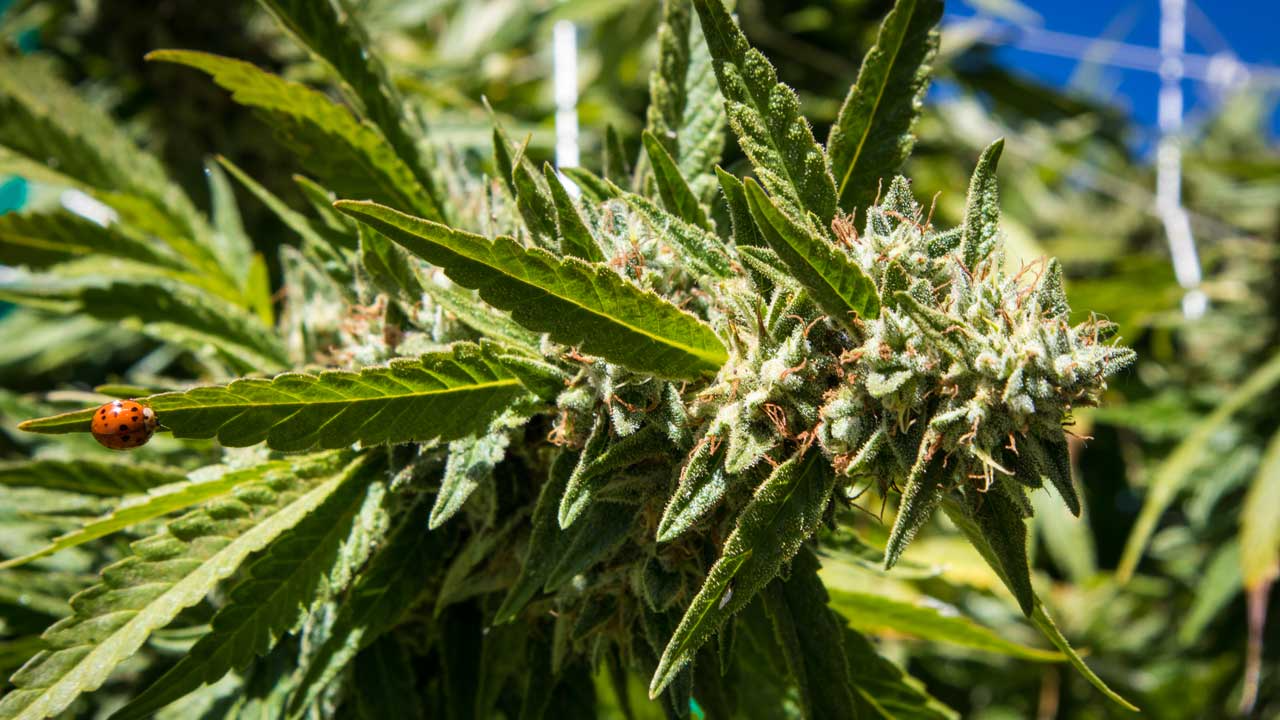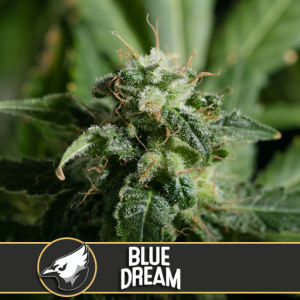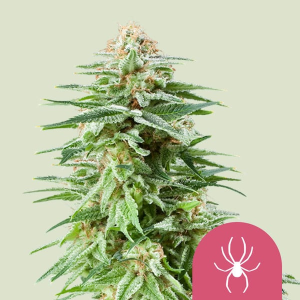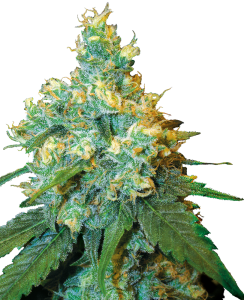There are 5 products for this.

Insects as beneficial insects for cannabis plants
In this article, we will discuss the topic of "Beneficial Insects for Cannabis Plants." As you probably already know, insects play an important role in nature, especially as pollinators and for pest control. When it comes to growing cannabis plants, insects can also be very helpful. We will cover the different types of insects that can serve as beneficial insects for cannabis plants. We will discuss how these insects can help repel pests and promote the pollination of cannabis plants. Additionally, we will cover some practical tips and techniques to encourage the presence of beneficial insects in your outdoor cannabis cultivation. The Cannoptikum crew hopes this article helps you understand the potential of insects as beneficial allies in your cannabis cultivation and provides practical advice on how to encourage these insects in your garden. For more detailed information on growing cannabis plants, check out our Cannabis Cultivation category. Insects play a crucial role in gardening and agriculture and are also vital for the cultivation of cannabis plants. There are two main reasons why insects are beneficial for cannabis plants: pollination and pest control. One of the most important tasks of insects in cannabis cultivation is pollination. Pollination is a process where pollen is transferred from male flowers to female flowers to enable the production of seeds. Without pollination, cannabis plants would not produce seeds and would eventually die. Bees and other pollinators like bumblebees, butterflies, flies, and beetles play a crucial role in the pollination of cannabis plants. These insects carry pollen from male flowers to female flowers, where it sticks and allows for fertilization. Another important role of insects in cannabis cultivation is pest control. Pests can significantly damage and even kill cannabis plants. Some of the most common pests that affect cannabis plants include Aphid infestation, Spider Mites, Caterpillars, and Thrips. Fortunately, there are a variety of predatory insects that feed on these pests and help keep their populations under control. For example, ladybugs and their larvae feed on aphids, while parasitic wasps target caterpillars, and predatory mites naturally combat spider mites. It is important to note that chemical pesticides used for pest control can kill not only pests but also beneficial insects. Therefore, it is often better to rely on natural methods to support pest control and encourage the presence of beneficial insects.Table of Contents
The Importance of Beneficial Insects
Discover more exciting articles about cannabis cultivation!
Beneficial Insect Types
Here are some of the most important beneficial insects that can help you in cannabis cultivation:
- Ladybugs: Ladybugs and their larvae are effective predators of aphids and other small pests. They help keep aphid populations under control.
- Parasitic Wasps: Parasitic wasps target caterpillars and other harmful insects, effectively reducing their populations. They are particularly useful in controlling leaf-eating caterpillars.
- Green Lacewings: Green lacewing larvae feed on a variety of pests, including aphids, spider mites, and thrips. They are versatile pest controllers and can help reduce various pest populations.
- Asian Lady Beetle: The Asian lady beetle feeds on aphids, thrips, and other pests. It is an excellent all-around pest controller.
- Predatory Mites: Predatory mites are effective against spider mites and other small pests. They are particularly useful in controlling spider mite infestations that can weaken plants.
- Ground Beetles: Ground beetles feed on fungus gnats and other soil-dwelling pests. They help protect the roots of your plants.
- Nematodes: Nematodes are microscopic worms that infest and kill various soil pests, such as fungus gnats and grubs.
- Assassin Bugs: Assassin bugs prey on a variety of pests, including aphids, spider mites, and whiteflies. They are versatile and effective pest controllers.
- Hoverflies: Hoverfly larvae feed on aphids and other small pests. Adult hoverflies are also pollinators.
- Spiders: Spiders catch and eat a variety of flying and crawling pests, including mosquitoes, flies, and beetles.
Common Pests
In cannabis cultivation, various pests can affect the health of your plants and reduce their yield. Here are some of the most common pests:
- Aphids: Aphids are small insects that suck plant sap, weakening the plants' growth. They can cause distorted leaves and stunted growth.
- Spider Mites: Spider mites also suck plant sap and can cause significant damage by their rapid multiplication. They leave fine webs on the plants.
- Thrips: Thrips cause damage by puncturing leaves and sucking plant sap. This results in distorted leaves and reduced plant health.
- Whiteflies: Whiteflies are small flying insects that settle on the undersides of leaves and suck plant sap. This weakens the plants and causes yellowing leaves.
- Fungus Gnats: Fungus gnat larvae live in the soil and feed on plant roots, leading to growth problems. Adult fungus gnats lay their eggs in moist soil.
- Caterpillars: Caterpillars eat the leaves of plants, causing significant damage. They leave large feeding spots and can greatly hinder plant growth.
Practical Tips for Encouraging Beneficial Insects in Cannabis Cultivation
Here are some practical tips to encourage the presence of beneficial insects in your cannabis cultivation:
- Provide Habitat and Food: Ensure there are enough plants near your cannabis that attract pollinators and provide clean water sources.
- Avoid Pesticides: Chemical pesticides can harm pollinators and beneficial insects. Instead, use natural pest control methods or integrated pest management systems.
- Avoid Disturbance: Ensure you do not unnecessarily disturb or move your cannabis plants, as this can disrupt pollination and the presence of beneficial insects.
- Monitor Pollination: Regularly monitor the progress of pollination to ensure all female flowers are successfully pollinated and no pests are infesting the plants.
Creating Wildflower Meadows and Other Habitats for Pollinators
By creating wildflower meadows and other habitats, you can attract and support pollinators and beneficial insects. Plants like sunflowers, lavender, marigolds, and clover provide food and habitat for pollinators and predatory insects.
Using Plants That Attract Beneficial Insects
Use plants that attract beneficial insects to support natural pest control. Some of these plants include:
- Marigolds: Attract beneficial insects like ladybugs and lacewings.
- Dill: Attracts hoverflies and parasitic wasps.
- Lavender: Attracts bees and hoverflies.
- Mint: Attracts predatory mites and lacewings.
- Sunflowers: Provide habitat for pollinators and beneficial insects.
Frequently Asked Questions
It is important to note that this is just a small selection of the many beneficial insects and pests that can be relevant for cannabis plants. In pest control, it is often helpful to use natural methods and specifically promote beneficial insects to maximize the health and productivity of the plants.
Conclusion:
In conclusion, insects play an important role in cannabis cultivation. Pollinators like bees and butterflies promote seed production, while predatory insects like ladybugs and predatory mites help with pest control. To maximize the health and productivity of your plants, you should use natural methods to support beneficial insects in cannabis cultivation. This includes avoiding pesticides, creating wildflower meadows and other habitats for pollinators, and using plants that attract beneficial insects. With proper planning and research, you can achieve a successful harvest without relying on harmful chemicals.
Disclaimer
This website's content is for informational use only and should not be considered medical or legal advice. Always consult a healthcare professional for health-related issues. Be aware of local regulations regarding cannabis cultivation. We are not liable for any actions taken based on this information.










